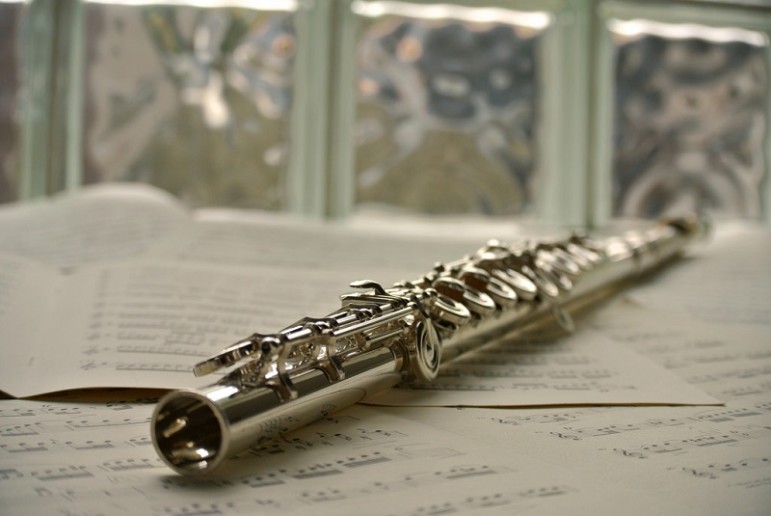
March 23, 2016; Observer
During the Great Recession, there were many calls sent up about the impending death of classical music. However, although it is a marginal slice of total music consumption in the U.S., immediate predictions of its demise have slowed down, as have closings and attempted closings of orchestras and operas. Still, many think that a hefty dose of experimentation may be in order to attract and stay engaged with new generations of fans.
The new Philharmonia Orchestra of New York (PONY), for instance, aims to make a more inclusive orchestra to attract younger audiences. Atsushi Yamada, music director and co-founder of PONY, told the Observer: “We wanted to move past traditional notions of classical music, bridge cultural divides and change perceptions of a genre of music for a new generation of music fans.”
Yamada, who is a self-taught musician and the first Japanese conductor of the New York City Opera, embodies this spirit of inclusivity for a younger generation. The selection of students from Japan and The College of New Jersey to sing in the chorus, as opposed to professional choristers, also points to a desire to promote accessibility. Ticket prices (which started at $5) were kept much lower than the industry standard in order to encourage audiences from all walks of life to attend.
The repertoire selection for their first concert was appropriate for the theme of rejuvenation. The orchestra performed Gustav Mahler’s 2nd Symphony, also known as “The Resurrection Symphony,” for its premiere on March 29th at Jazz and Lincoln Center’s Rose Theater. In partnership with Project Hand in Hand, a musical organization dedicated to the long-term recovery of parts of Japan following the earthquake, tsunami, and nuclear disaster in 2011, the Philharmonia’s choice of repertoire was a two-fold attempt to promote the concept of resilience and rebirth—both for the New York City classical music scene and for the victims of these devastating natural disasters.
Sign up for our free newsletters
Subscribe to NPQ's newsletters to have our top stories delivered directly to your inbox.
By signing up, you agree to our privacy policy and terms of use, and to receive messages from NPQ and our partners.
The task of reinvigorating classical music, particularly in the oversaturated, and, some might say, elitist classical music community in New York, is not an easy feat. To achieve this, PONY utilized visuals that played during the concert, and encouraged clapping between movements. Unfortunately, as an attendee, I found these visuals to be incredibly distracting and, at times, painful, as moving spotlights shone in the eyes of the audience at various points throughout the performance. The images on the screen, though grouped thematically to make logical sense with the music, did not heighten my appreciation of the performance.
The Orchestra brought enthusiasm and energy to the task of reinvigorating classical music. The strings, in particular, had a vibrant and warm tone, and the brass section performed some truly challenging passages with aplomb. Though it seemed the orchestra did not make use of its fullest dynamic range at certain sections, Maestro Yamada’s conducting was earnest and energetic. The chorus, despite the fact that its members hailed from different countries and did not have much rehearsal time together, had a balanced and rich, full sound. The German diction could have been a bit cleaner in parts, but the addition of English supertitles ensured that the audience was able to understand what was being said.
In all, I enjoyed the inaugural performance of the Philharmonia Orchestra of New York. Either of the concert’s goals—to promote healing in Japan following a string of deadly natural disasters and to promote the revitalization of classical music performance in New York—would be ambitious for a well-established music organization to achieve, much less both at once. It seems that the first goal is being worked on steadily and that it has already borne fruit in enriching the lives of many Japanese students and providing a funding source for rebirth projects in the affected areas. Time will tell, however, if the Philharmonia will meet its second goal. With no plans to establish a set season, the project could very well fizzle out without the injection of a structured plan to continue engaging audiences and performing repertoire.
With an attitude reminiscent of many tech start-up philosophies, David Titcomb, co-founder and executive director of the Philharmonia, told the Observer: “We’re gonna get feedback from the people we’ve invited to these concerts, as well as the ticket-buying public that will come, and we’ll see. We’ll adjust and we’ll try new things as well if we think that there’s a better way to go.”
NPQ knows that many other classical music organizations are doing their own experiments. We have covered a number of these, but we would love to hear from others about what they are trying—what works and what doesn’t to build an audience.—Sophie Lewis













